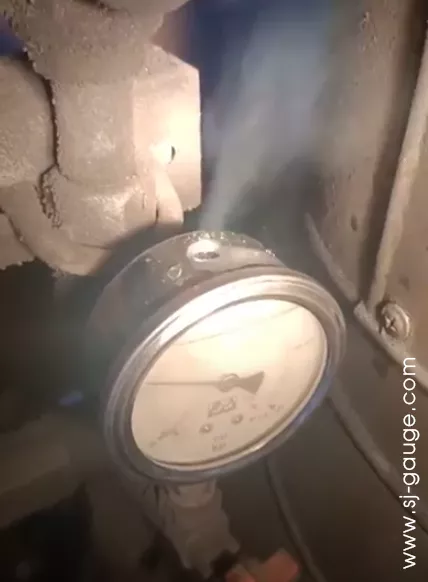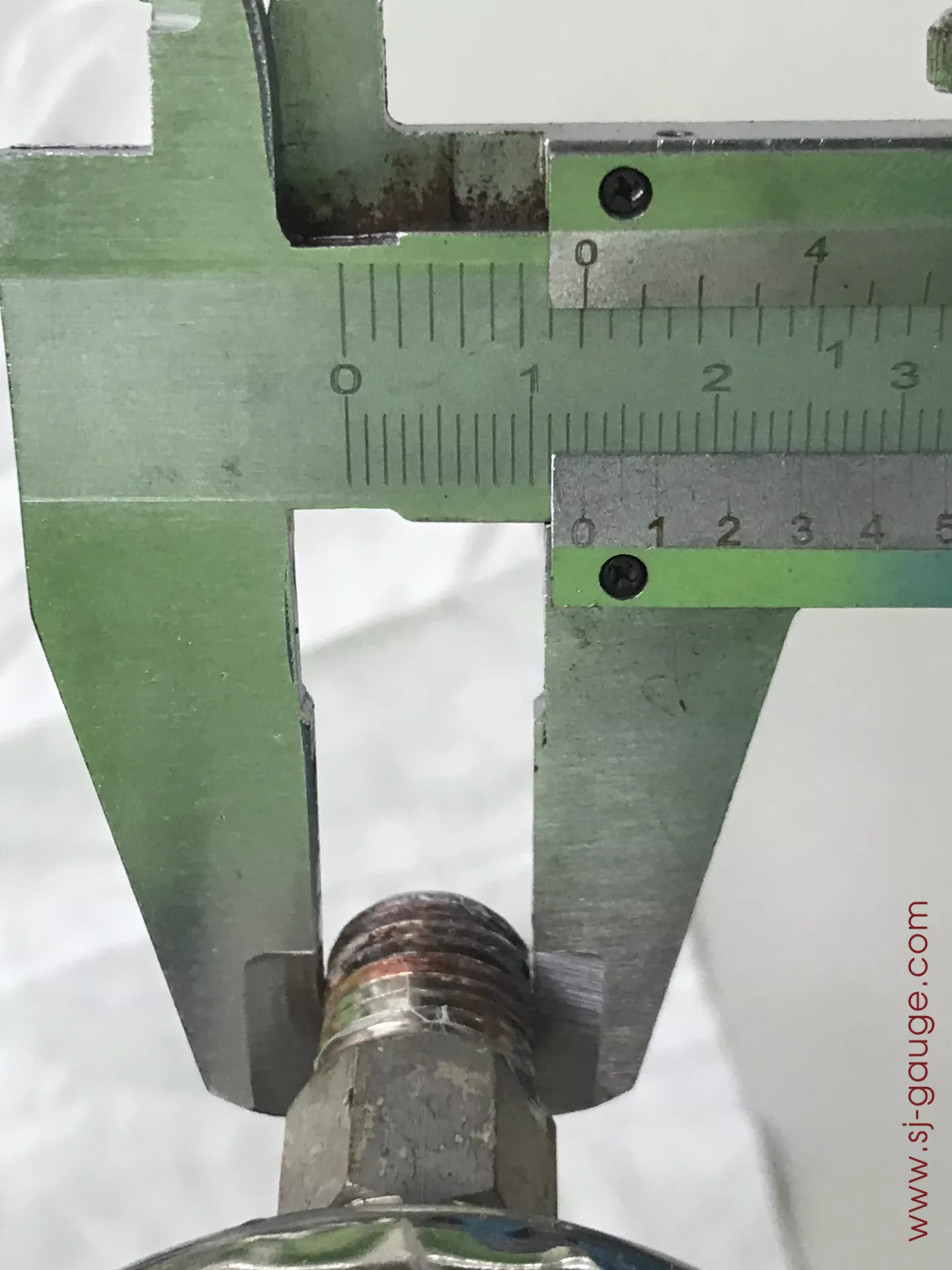SJ Gauge has many years of professional experience in measuring pressure and temperature. In this article, we will share with you how to interpret pressure gauges. We will also provide guidance on how to handle damaged pressure gauges. Furthermore, we will discuss the six common causes of pressure gauge failure, allowing you to gain a comprehensive understanding through this article.
If you are interested in the topic of this article, please continue reading. Feel free to ask any questions or directly contact us. SJ Gauge is dedicated to providing you with the best answers and solutions.
Contents

1.What causes pressure gauges to fail?
2.The six main reasons for pressure equipment failure.
(a) Excessive vibration/pulsation

Figure1:Pulsation causes pointer flutter and poor gauge readability.
Reason:
Solution:
(b) Extreme high/low temperatures

Figure2:Extreme media temperatures can cause Bourdon tubes to rupture and vapor to erupt from the vent hole.
Reason:
Solution:
(c) Pressure spikes/overpressure

Figure 3:Overpressure causes the Bourdon tube to be deformed
Reason:
Solution:
(d) Instrument clogging

Figure 4:Installing diaphragm seals prevents any direct contact between processed media and the Bourdon tube, which causes clogging.
Reason:
Solution:
(e) Instrument corrosion

Figure 5:Metal cases are corroded in highly alkaline or acidic environments.
Reason:
Solution:
(f) Instrument abuse/mishandling

Figure 6:Use a vernier caliper to measure thread size.
Reason:
Solution:
3.Regular maintenance and servicing of pressure gauges
Here are some relative articles. Click on the links below to get more information:








